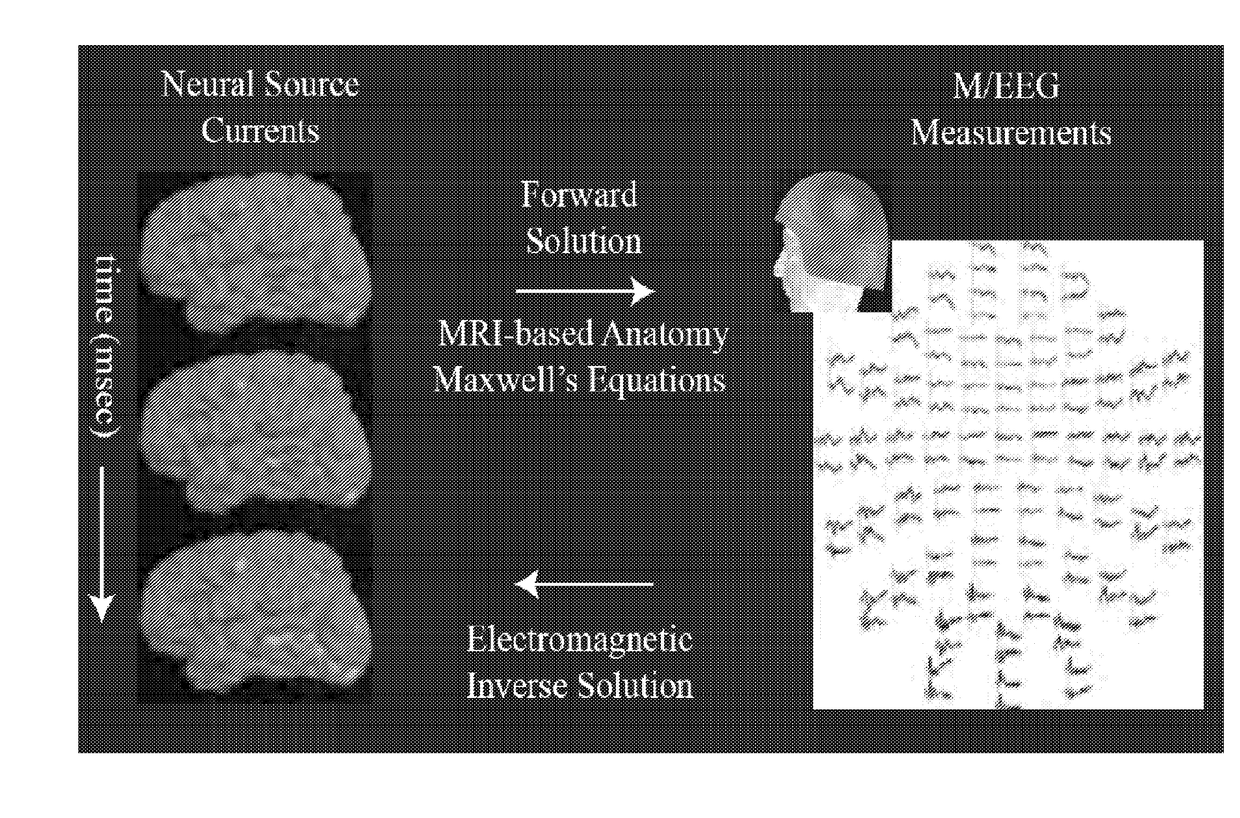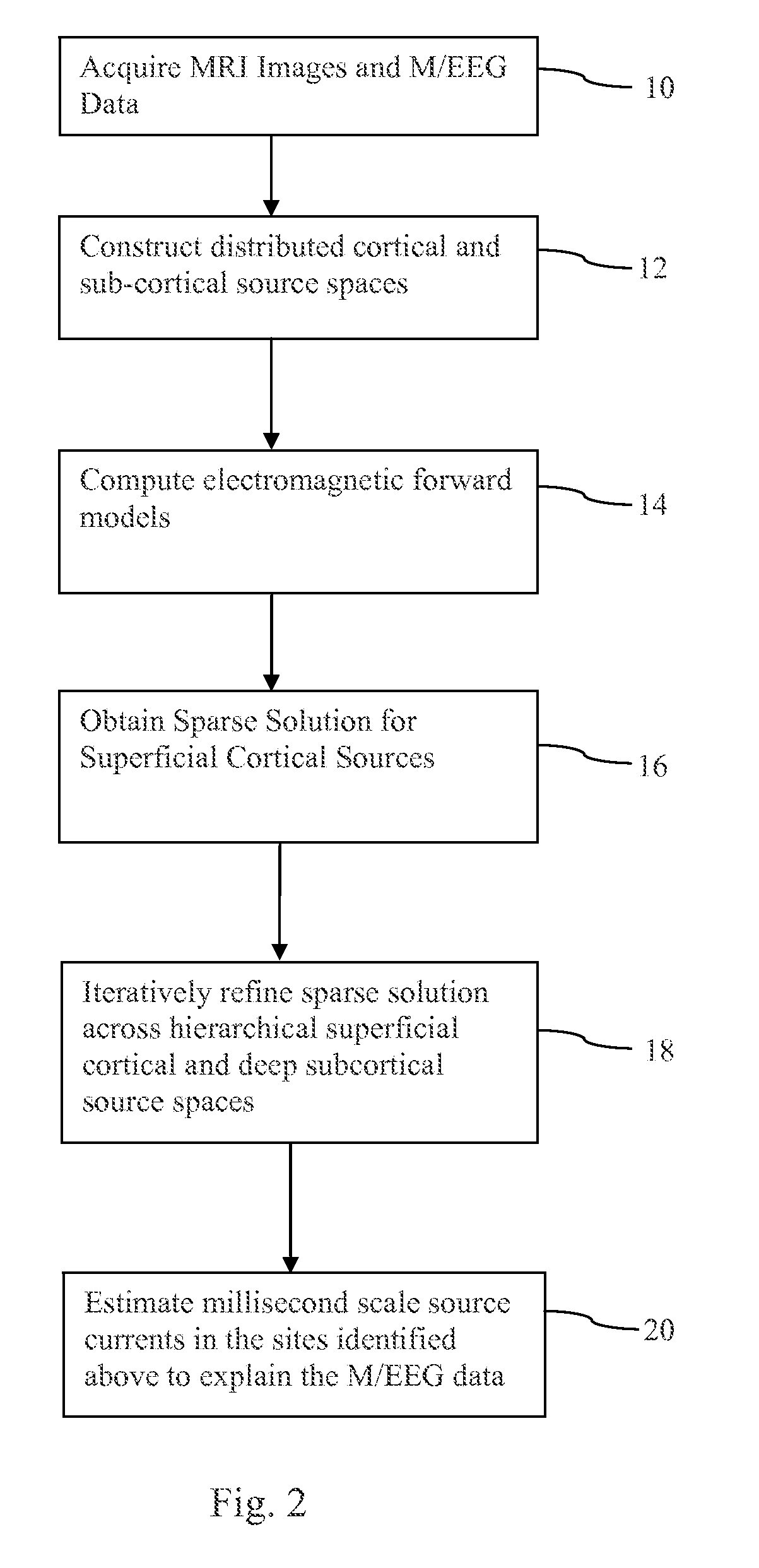Deep brain source imaging with m/eeg and anatomical MRI
a brain source and anatomical technology, applied in the field of deep brain source imaging with m/eeg and anatomical mri, can solve the problems of high invasiveness, high invasiveness, and difficulty in technology using known methods, and achieve the effect of lower resolution and higher resolution
- Summary
- Abstract
- Description
- Claims
- Application Information
AI Technical Summary
Benefits of technology
Problems solved by technology
Method used
Image
Examples
Embodiment Construction
[0030]The present disclosure describes methods of electromagnetic source imaging with non-invasive M / EEG recordings and MRI-based anatomic measures that can be used to acquire gain-insensitive information in M / EEG arising from subcortical and cortical structures, and provides a hierarchical subspace pursuit algorithm to estimate neural currents in the subcortical structures. Distinctions between field patterns can be used to localize subcortical sources and distinguish subcortical versus cortical contributions using the hierarchical subspace pursuit process or algorithm.
[0031]Referring now to FIG. 2, a flowchart illustrates a series of steps for estimating source currents from deep brain regions with a hierarchical subspace pursuit algorithm. Initially, M / EEG data are acquired during a neurophysiologic paradigm of interest. These recordings are complemented with magnetic resonance images of the subject's brain anatomy (step 10). Next, distributed source spaces are constructed from t...
PUM
 Login to View More
Login to View More Abstract
Description
Claims
Application Information
 Login to View More
Login to View More - R&D
- Intellectual Property
- Life Sciences
- Materials
- Tech Scout
- Unparalleled Data Quality
- Higher Quality Content
- 60% Fewer Hallucinations
Browse by: Latest US Patents, China's latest patents, Technical Efficacy Thesaurus, Application Domain, Technology Topic, Popular Technical Reports.
© 2025 PatSnap. All rights reserved.Legal|Privacy policy|Modern Slavery Act Transparency Statement|Sitemap|About US| Contact US: help@patsnap.com



